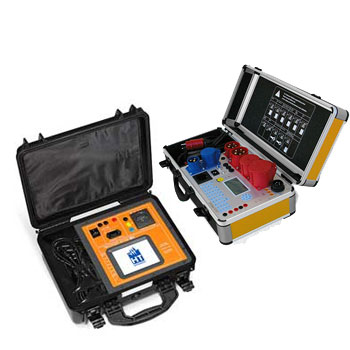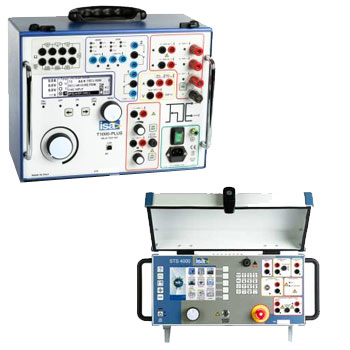
Humidity Instruments & Sensors – reliable RH/T measurement for buildings, labs & process
Humidity instruments and sensors measure relative humidity (RH), temperature, and—depending on model—also dew point, enthalpy and water activity (aw). Formats include room/duct transmitters, process probes (also ATEX), handhelds, data loggers and reference devices for calibration/validation.
Outputs & interfaces: 4–20 mA, 0–10 V, relays, Modbus RTU/TCP, BACnet, IO-Link and in some cases Ethernet/PoE. Options include interchangeable sensor modules, display/logger, heated/filter caps, hygienic design and calibration certificates.
ICS Schneider Messtechnik supports selection, placement, calibration/recalibration, validation and IIoT integration with fully traceable documentation.
FAQ on Humidity Instruments & Sensors
Answers on sensor technology, accuracy, installation, compressed-air dew point, calibration, hygiene/Ex, interfaces and best practices.
Which sensing technologies are used?
Capacitive polymer RH/T sensors (the standard), resistive types for special cases, chilled-mirror hygrometers as lab references, and trace-humidity/dew-point sensors for very dry gases.
What is the difference between RH, dew point and aw?
RH = relative humidity in %. Dew point = temperature at which condensation begins. aw = water activity (0…1) used to assess microbial stability of products.
What accuracy is realistic?
Quality transmitters typically achieve ±1…2 %RH and ±0.2…0.3 °C. Laboratory references can be more accurate but require greater care and maintenance.
Which form factors are available?
- Room/wall transmitters for buildings, cleanrooms, museums
- Duct probes for ventilation/air-conditioning
- Process probes with guards/filters, also ATEX/IECEx
- Handheld instruments & data loggers for service/QA
- In-line dew-point sensors for compressed air/gases
How does temperature impact RH readings?
RH is strongly temperature-dependent. Keep sensor and reference isothermal; avoid drafts and heat sources during measurement and calibration.
What matters for compressed-air dew-point measurement?
Pressure dew point ≠ atmospheric dew point. Ensure representative sampling (bypass/restrictor), filtration (particles/oil), allow warm-up and, if required, sensor regeneration.
How do I choose the measuring range?
HVAC applications: 10…90 %RH, −20…+60 °C. Drying/trace-humidity: very low dew points (e.g., −20/−40/−80 °C td). Process/hygienic areas often need IP65/67 and extended temperature ratings.
Which filter/guard caps are useful?
PTFE sinter or stainless mesh for dust/splash protection; heated caps to avoid condensation; chemically resistant filters for aggressive atmospheres.
How do I install room/duct probes correctly?
In ducts, mount perpendicular to airflow with sufficient insertion depth. In rooms, place away from doors/heaters, at mid-height with good air mixing.
Which interfaces fit my system?
4–20 mA / 0–10 V for PLCs/controllers; Modbus RTU/TCP & BACnet for building/process integration; IO-Link for sensor diagnostics; some models offer Ethernet/PoE and cloud via MQTT/HTTPS.
How often should I (re)calibrate?
General rule: annually; semi-annually for critical applications. After shock/replacement perform an interim check using salt solutions or a humidity generator.
Which calibration methods are available?
Saturated salt solutions (fixed points), controlled humidity generators/climate chambers, and chilled-mirror references. Always define stability criteria.
How do I document compliantly?
Record as-found/as-left, point lists, traceability chain, ambient data (T/RH), and expanded uncertainty k=2; export as PDF/CSV with optional e-signature/audit trail.
Are hygienic/ATEX variants available?
Yes—hygienic designs with smooth surfaces, FDA-compliant seals, CIP/SIP resistance; plus ATEX/IECEx certified transmitters/probes with suitable barriers.
How do I deal with condensation and chemicals?
Use heated sleeves, chemically resistant materials/filters, and regular cleaning. Shorten calibration intervals under harsh exposure.
How do I integrate sensors into BMS/SCADA/IIoT?
Connect analog/digital outputs directly to DDC/PLC, or use an edge gateway for buffering, MQTT, alarms and dashboards.
What are common pitfalls?
- Poor placement (drafts/heat sources)
- Dirty filters or missing guards
- Temperature gradients between sensor and reference
- Insufficient stabilization time during calibration
Do you support design & validation?
Yes—we define measurement points, select the sensor/interface, plan calibration intervals, provide factory/DAkkS certificates and integrate systems with your QM/IIoT stack.














































































































































































